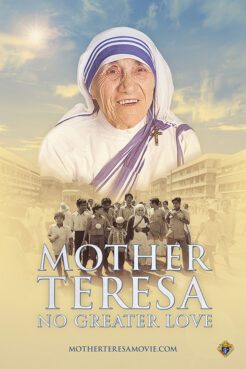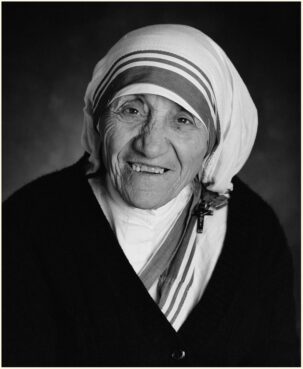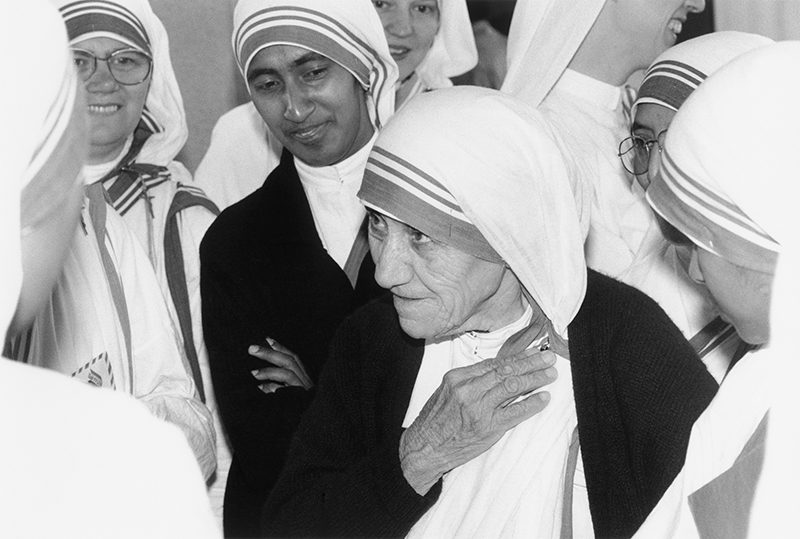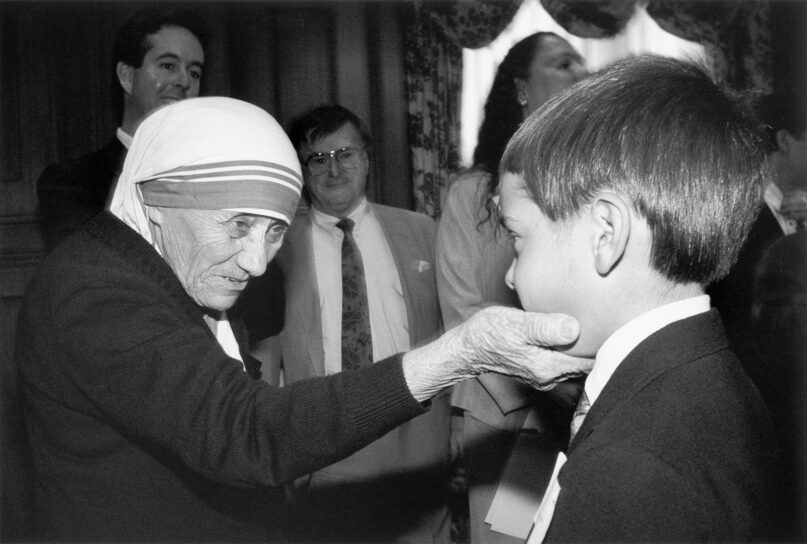VATICAN CITY (RNS) — A new documentary depicting the life and legacy of Mother Teresa, the Albanian-Indian nun canonized in 2016 who was known for her charitable and spiritual work with the poorest in society, premiered at the Vatican movie theater on Wednesday (Aug. 31).
The creators of the film, “Mother Teresa: No Greater Love,” hope it will rekindle the faith of young people today and inspire a missionary spirit in anticipation of the 25th anniversary of the saint’s death on Sept. 5.
“The Holy Father hopes that the film will make accessible the zeal for evangelization especially for the young generation and promote the desire to follow the Lord who loved us first,” read a Vatican letter addressed to Patrick Kelly, the Supreme Knight of the Knights of Columbus, which sponsored the movie.
Just like the film, “Pope Francis is looking into the future and into reaching new generations,” Kelly said during a news conference presenting the movie on Wednesday. The Knights of Columbus, a U.S.-based charitable organization, worked closely with the Missionaries of Charity, Mother Teresa’s religious order, to create the documentary.

Poster for “Mother Teresa: No Greater Love.” Courtesy image
While Mother Teresa was considered a superstar nun up until her death in 1997, Kelly said many young people entering religious orders today have no living memory of her. The documentary traces the highlights of the sister’s life, interlacing them with her legacy — shown through the work of the Missionaries of Charity serving the poor around the world.
The production team traveled to many remote regions of the world to create the film, from the isolated communities of the Amazon jungle, to the ghettos of Nairobi, Kenya, to the Venezuelan immigrants in the refugee camps of Tijuana, Mexico.
“Mother Teresa and her sisters go to the most hellish places and bring light, love and the mercy of God,” said Cardinal Seán O’Malley, archbishop of Boston and adviser to Pope Francis. O’Malley said that as a seminarian, when he met the now saint in the 1960s, “we were aware that we were in the presence of holiness.”
Her life, he added, can be a witness in today’s society that “a drop of mercy in an ocean of misery makes a difference.”
Born in 1910 in Skopje in the Ottoman Empire, now the capital of North Macedonia, Mother Teresa grew up in a Catholic family amid the turmoil of the Balkan Wars. After joining the Sisters of Loreto in Ireland, Teresa decided to travel to Calcutta (now Kolkata) in 1929, as she had long desired to become a missionary.
The documentary shows never-before-seen archival footage and interviews with bishops, nuns and laypeople who were touched by her life and ministry.
“It’s beautiful to see the work of Mother, the work that is service, that bends down to the least and the last. A service that brings God’s presence, his love and compassion, but also brings joy for those who give and for those who receive,” said Sister M. Miryam Thérèse, the regional superior of the Missionaries of Charity, at the news conference.
Mother Teresa felt a divine calling to cater and minister to the poorest of the poor and eventually followed that voice to the misery-filled streets in India. By 1948, the nun was well known for helping the dying and suffering in Calcutta, while wearing a simple cotton sari, worn by the poor in India, which would eventually become the habit of her followers, the Missionaries of Charity.
Lepers, orphaned children, the sick and the dying, all found refuge in the homes created by Mother Teresa to care for them. The documentary shows that her work continues today, with the sisters of her order caring for the spiritual and physical needs of the outcasts.

Mother Teresa in an undated photo from “Mother Teresa: No Greater Love.” Courtesy image
Known for being camera-shy, Mother Teresa disliked sitting for interviews and portraits even as her fame grew. A direct order from the Vatican was required for her to sit down for an interview with BBC’s Malcolm Muggeridge, which in 1971 resulted in a book and documentary that skyrocketed the tiny nun to international stardom.
The documentary shows Mother Teresa winning the Nobel Peace Prize in 1979 and establishing a special relationship with St. John Paul II, who would send her in his stead from Beirut to Moscow to face the complex realities of the Cold War during his papacy.
Whether on behalf of pregnant women with drug addictions, people suffering from AIDS or gangsters in the outskirts of Chicago, Mother Teresa is seen in the documentary fighting against prejudice and hatred. “Each one of them is Jesus in a distressing disguise,” she tells the camera with a smile.
“Mother Teresa was a spiritual giant and a great saint of the century, but also a great saint for our time,” said David Naglieri, who directed and produced the film.
RELATED: They called for female leadership at the Vatican. They were arrested.
As Mother Teresa’s fame grew, so did the criticism. Her position against abortion and contraception has been controversial for abortion-rights advocates, while others argued the state of her facilities for the dying was inadequate.
British author and journalist Christopher Hitchens was among her most adamant critics, calling her a hypocrite who was more interested in promoting the gospel than helping the poor. The Rev. Brian Kolodiejchuk, the postulator for Mother Teresa’s canonization cause, called such claims “wrong or misrepresented” at the news conference.
The documentary does not shy away from representing the deep spiritual crisis that Mother Teresa underwent during her 66 years serving the poor, when she questioned the presence of God and despaired over the suffering in the world.

Mother Teresa surrounded by other Missionaries of Charity nuns in an undated photo from “Mother Teresa: No Greater Love.” Courtesy image
Her ministry inspired the work of five branches of the Missionaries of Charity who now run 764 charity homes around the globe. The documentary takes care to portray the work of its nuns encouraging the poor in New York’s Bronx borough or cuddling a macrocephalus child in Kenya.
John Paul II beatified Mother Teresa in 2003 and she was made a saint in 2016 by Pope Francis, who described her as “a model of holiness” to the thousands gathered in the square.
“I think Mother is calling all of us to continue what God has done in her through us,” Thérèse said. “She asks us to be open to receive this love of God and give this love by our service to the poor.”
RELATED: Erasing pro-life Christians of color





